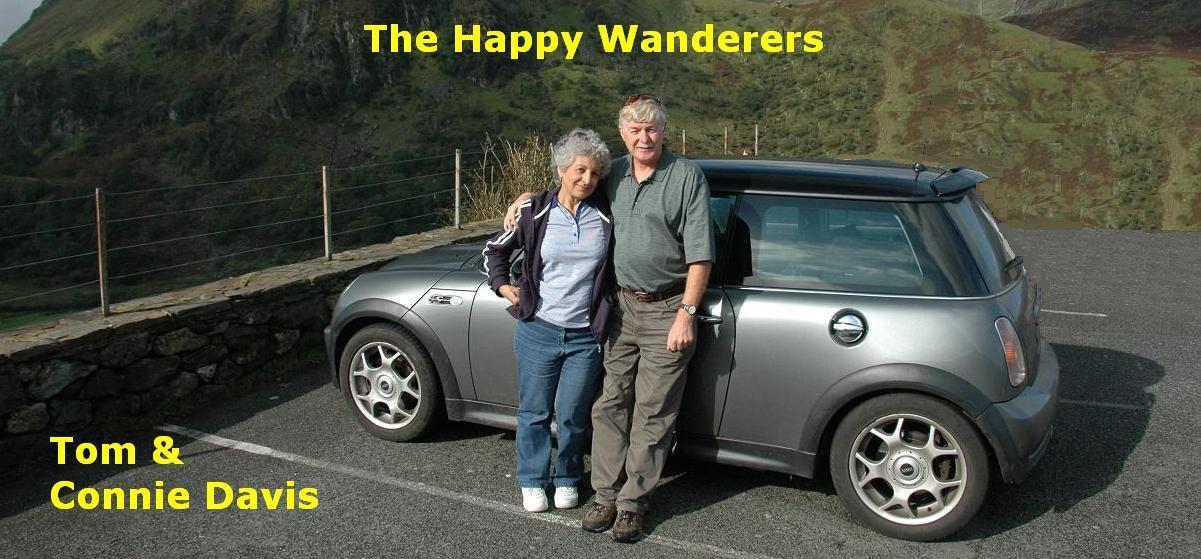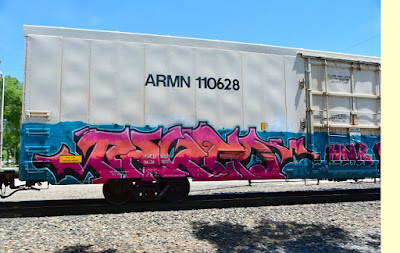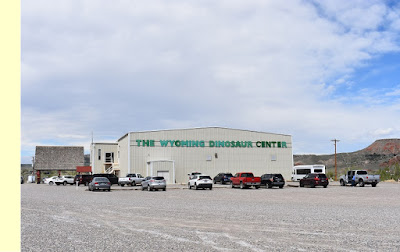On the positive side, there are a couple of "Don't Miss" options that we always try to include in our itinerary when we're traveling Interstate 80 across the Great Basin. Those two are the Overland Trail Museum on the West side of Elko and the Elko city museum spotted next to Elko's events center and city park. Both are really great places to stop on a lunch hour, or just to stretch your legs after a long drive.
We stopped at the Elko city museum on our way east during the first week of our vacation. They had made lots of changes since our last visit, and we had an excellent time viewing the wonderful art in the changing gallery in the museum annex. We also enjoyed the original part of the museum that we always revisit for its quality displays.
Today, as we drove west, we wanted to stop and visit the Overland Trail Museum hoping to combine a museum tour with our lunch hour. But imagine our horror when we exited the Interstate and drove up to the entrance gate and found it locked! Not satisfied with seeing the closed, and seemingly locked gate from the truck window, I got out and went over to test the integrity of the lock.
Yup, it WAS locked for sure and pasted to the gate was a rather lame message that said: "in accordance with CDC directives, the museum is closed." To help potential guests understand, the sign included a phone number should those guests want to call and have it explained verbally.Naturally, I called the number since I could easily see two or three cars in the museum parking lot about a thousand feet from the locked gate where I stood. However, as one might expect in such an inane situation, the listed phone number was "not in service at this time."
Now we've been on the road for nearly a month and have been to countless museums and RV camps and grocery stores and, well, you name it, and few are even requiring a mask anymore. Once in a great while we'll encounter someone with a mask on anyway, but they're definitely in the minority. So, we wonder, what's up with the Overland Trail Museum? Evidently, the bad phone number on the gate was going to be no help answering that question.
For a few moments I toyed with the idea of driving in the outbound traffic gate as IT was open. But instead, I just steered the rig back onto the Interstate and continued heading west. It took a while to get over that bit of disappointment, but we focused our attention on our DVD book, though a more improbable story you'd have a hard time finding. The tail involves an Irish family that has decided to become Mormons in the year 1850, and the story details the trials and tribulations they face as they board a ship in Liverpool, England, and cross the Atlantic to New York.
Since the story was meant to be somewhat charming, it managed it keep our interest, but I won't bore you with the plot details. In short, I suspect the family will probably succeed in outwitting everyone from the heavy-handed rich parents of their chance female traveling companion, to the many and sundry American holligans hoping to take advantage of the family's naivete.Since we couldn't have lunch at the trail museum, we settled for a semi-shaded lunch spot in a casino parking lot across the street from "The Owl Club Casino and Restaurant" in Battle Mountain, right next to the Union Pacific mainline. Though the line was quiet through most of our lunch hour, a fast freight did announce itself in time for me to grab the camera and dash out to shoot the locomotive. Then, as an afterthought, I started shooting the spectaucularly-color graffiti on the sides of many of the train cars as they sped past at sixty miles per hour.
This brings me to the topic of this blog: railroad car grafitti.
I don't know how many years it has been happening, but painting the name of your girlfriend or streetgang or favorite band on the sides of boxcars, refrigerator cars, or even mesh-sided automobile-carrying cars has become as common as people living on the streets in America. I've never been sure why railroads accept the practice, but maybe it's just impossible to stop.
I visited the "National Railroad Museum" website to learn more about railroad graffiti. They had this to say: "Modern American graffiti, as we know it, began in the United States and is attributed to a Philidelphia high school student known as “Cornbread.” Trying to attract the attention of a girl in 1967, he began signing his name, or “tagging,” public areas of the city.""The form exploded in New York during the 1970s as “TAKI 183” and “Tracy 168” would “bomb” subway cars with their imaginative signatures, spreading the graffiti idea throughout the region the train traveled. The growth of street gangs and the political and social changes that characterized the 1960’s and 1970’s, whose sometimes illegal and divisive tactics marginalized the art form, while simultaneously bringing it into mainstream American culture."
"Today graffiti is alternately lauded by art critics and enthusiasts, while demonized by property owners, creating tension and discussion within the community about issues ranging from vandalism to free speech."
As you can see from the photos, shooting the cars while they're flashing past is certainly not optimum. But seldom are we ever close enough to parked freight cars to do any photography. Plus, tresspassing on railroad property is seldom safe in these times of home-grown terrorists looking to disrupt society. Railroad employees are specifically trained to look out for folks lurking around on railroad property.
To read more about railroad graffiti go to: https://nationalrrmuseum.org/blog/from-boxcars-to-big-boy-the-story-of-railroad-graffiti/




















































